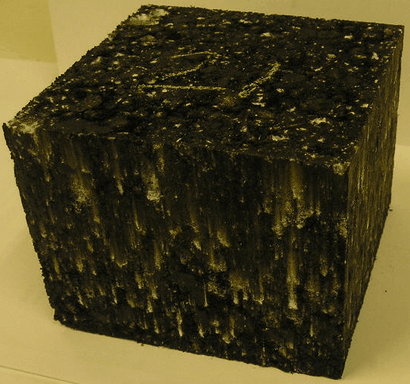Fired up by earnest concern, downright zeal, sheer creativity, desperation, confusion, or a whole slew of mental and emotional states, some folks have come up with ideas and put out remedies to the malady that ails planet Earth. Some of the initiatives may be downright wacky, still some a bit impractical. But, hey, they’ve made a step towards solving the woes of this one and only planet we call our own – something not all of us can actually claim to have done.

“Bitublocks” are construction materials made out of junk and waste such as recycled glass, sewage sludge, and incinerator ash. Invented by an engineer at the University of Leeds in England, the refuse with which these materials are made are kept from ending up at landfills. On the other hand, some scientists want to make more environmentally-friendly plastics out of chicken feathers.
Somewhere in Los Angeles, some employees keep a plastic bin of wriggly worms that they feed with their leftover sandwich crusts and apple cores, which the worms turn into compost.
Because carbon dioxide builds up in the atmosphere and warms the Earth, some scientists have proposed to capture plant emissions, compress them, and bury the carbon underground.
China wants to do away with what it calls “white pollution,” or those ubiquitous plastic bags that carry all and sundry, because they clog city street drainage and waterways. Australia wants to eliminate incandescent bulbs, thereby helping reduce greenhouse emissions.
Some scientists have proposed to put a ring of sunlight-scattering particles or micro-spacecraft in orbit around the equator. The ring which could cost trillions of moolah will reduce the amount of solar radiation and cool the planet a bit from greenhouse gases. Think Wayfarers on a beach bum.
Alternatively, some scientists have suggested injecting sulfur into the atmosphere to counteract global warming, in the hope that it could have the same cooling effect that occurs after a sulfur-spewing volcano erupts. Of course, we will need tons and tons of sulfur to do that regularly, as well as expect a lot of acid rain.
There is a suggestion by some people in the know to fertilize parts of the ocean with iron. Iron accelerates phytoplankton growth. Huge plankton blooms will use more carbon dioxide to make food. All the better to make those planktons happy since we have an excess of carbon dioxide.
Some of these ideas may sound zany to you but, most definitely, not to those who conjured them up. Let’s leave them to their insightful concepts. We have some thinking to do on our own, too.
Let’s start to make at least one step towards the solution of the problem. And we’ll do that today, won’t we? If you walk, instead of drive, you will help reduce carbon dioxide emission. The planktons will not be happy for it, but surely they’re already giddy with delight over the glut in CO2. You might also want to consider limiting meat in your meals this week. The meat industry is responsible for 18 percent of global greenhouse gas emissions through fertilizer use, animal manure, and the energy required transporting food and meat, so says the United Nations Food and Agriculture Organization.
You may not opt to use “sewage bricks” for your dream home but you can carry your next batch of groceries in a reusable cloth bag. And if you find putting giant sunglasses on earth an out-and-out madcap suggestion, you may simply choose to replace your broken incandescent bulb with a more cost-saving compact fluorescent bulb.
The call is yours. And we’ll take crazy ideas, too, if you have some.
http://www.livescience.com/environment/top10-crazy-environ-ideas-1.html
http://blog.sellsiusrealestate.com/bitublocks-and-vegeblocks/building-houses-from-trash-bitublocks-and-vegeblocks/2007/05/01/
http://phytoplankton.gsfc.nasa.gov/




